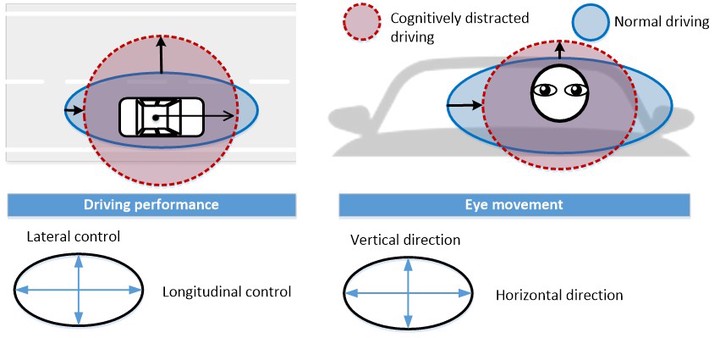Detection of Driver Cognitive Distraction: A Comparison Study of Stop-Controlled Intersection and Speed-Limited Highway
 Image credit: Yuan Liao
Image credit: Yuan LiaoAbstract
Driver distraction has been identified as one major cause of unsafe driving. The existing studies on cognitive distraction detection mainly focused on high-speed driving situations, but less on low-speed traffic in urban driving. This paper presents a method for the detection of driver cognitive distraction at stop-controlled intersections and compares its feature subsets and classification accuracy with that on a speed-limited highway. In the simulator study, 27 subjects were recruited to participate. Driver cognitive distraction is induced by the clock task that taxes visuospatial working memory. The support vector machine (SVM) recursive feature elimination algorithm is used to extract an optimal feature subset out of features constructed from driving performance and eye movement. After feature extraction, the SVM classifier is trained and cross-validated within subjects. On average, the classifier based on the fusion of driving performance and eye movement yields the best correct rate and F-measure (correct rate = 95.8 ± 4.4%; for stop-controlled intersections and correct rate = 93.7 ± 5.0%; for a speed-limited highway) among four types of the SVM model based on different candidate features. The comparisons of extracted optimal feature subsets and the SVM performance between two typical driving scenarios are presented.